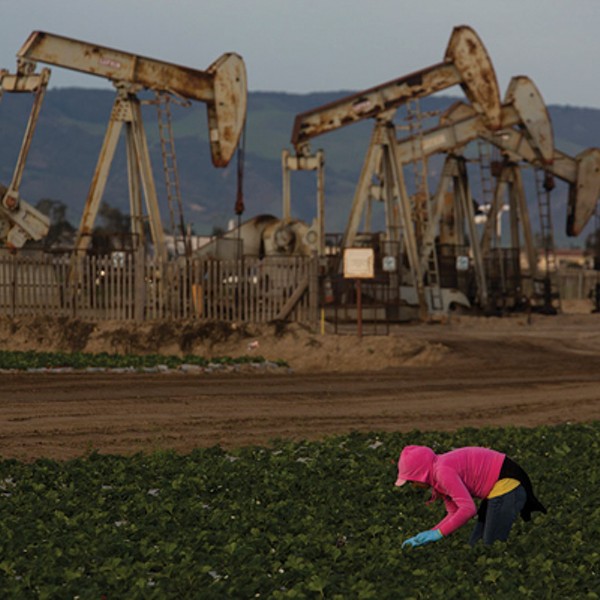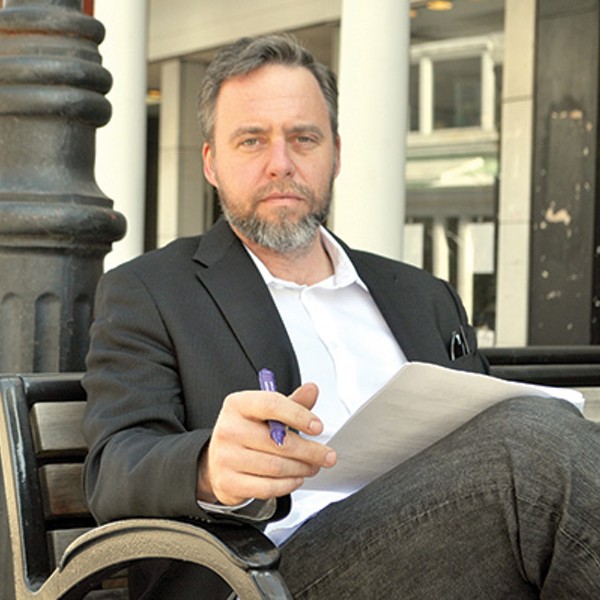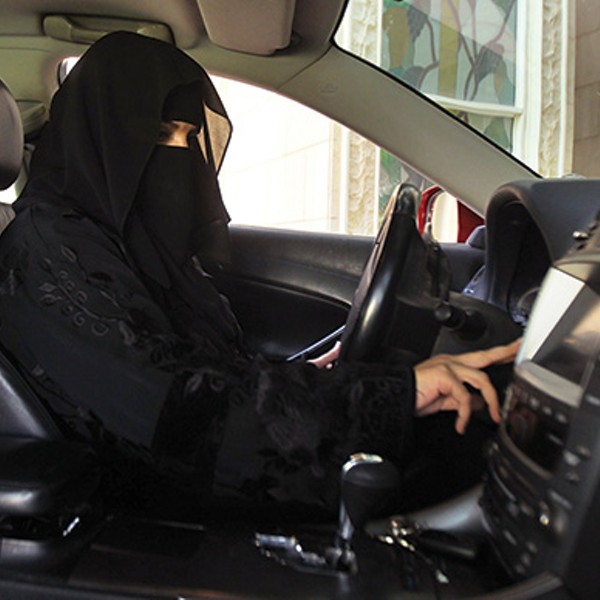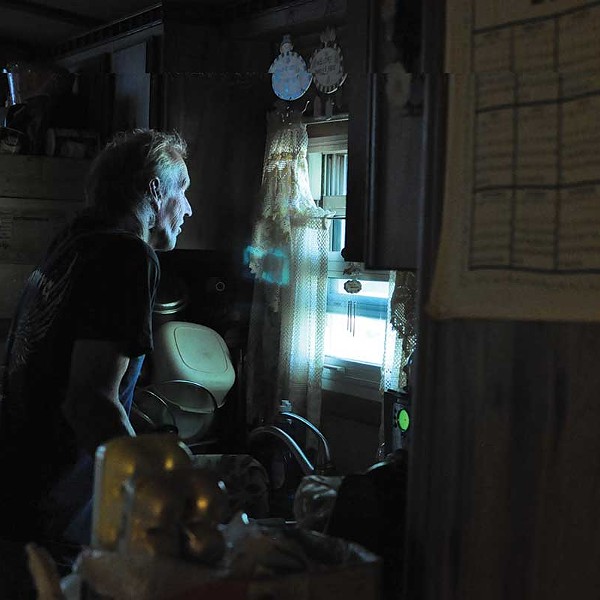“This is the rhythm that we’ve gotten into in this country: A reporter, a muckraker, or a filmmaker goes in and bunks. Then the industry debunks. Then the regulators come in and say, ‘We did our part.’ Meanwhile, there are all these people who are suffering, and they have nowhere to turn and no one to trust. Is this just a matter of, are we expecting too much that sucking something out of the earth is going to be a harmless process?”
on the June 21 “Daily Show”
The US has proven natural gas reserves of 20 trillion cubic feet, placing it seventh on the world list behind Russia, Iran, Qatar, Turkmenistan, and Saudi Arabia. In 2009, for the first time in 10 years, the US extracted more gas than Russia. This was due to a recent drilling boom in the US of previously inaccessible rock formations. The method used to get at the hard-to-reach gas is hydraulic fracturing.
Here’s how hydraulic fracturing, also known as fracking, works: A horizontal well is drilled into a gas-bearing rock formation. The wells are usually quite deep, and can be as far as 10,000 feet below the surface. Once drilled, millions of gallons of water, sand, and chemicals are injected, under high pressure, into the well. The pressure fractures the rock and props open fissures that enable natural gas to flow more freely out of the well.
Fracking is especially good at getting gas out of “tight” rocks like shale. One such shale formation that has begun to be drilled in this manner is the Marcellus Shale, which stretches deep underground from Ohio and West Virginia into Pennsylvania and south-central New York. Energy companies have referred to the Marcellus Shale, estimated to contain between 200 and 500 trillion cubic feet of natural gas, as a “Saudi Arabia of natural gas.” Texas oil- and gas-millionaire T. Boone Pickens has suggested using this new surfeit of energy to help wean the US off foreign oil, turning it into vehicle fuel. (Natural gas currently supplies the US with 20 percent of its electricity needs. Viewed as a “clean” alternative to coal—coal provides 50 percent of US electricity—natural gas is expected to supplant coal as the majority electricity supplier in the US by 2034.)
Not only is the Marcellus Shale (in addition to other shale deposits across the US) seen as a possible answer to our dependence on foreign oil, in rural communities, it’s seen as economic salvation. Proponents of drilling in New York claim that Pennsylvania, where hydraulic fracturing in the Marcellus Shale is underway, has created over 40,000 jobs and had a positive economic impact of almost $2 billion. Many upstate landowners and farmers see drilling as a heaven-sent way for them to be able to afford to stay on their land in an increasing difficult economic climate.
The environmental problems associated with fracking, however, have led critics of the procedure to wage a campaign which has stalled approval of drilling in New York. State legislators are currently considering two bills that would enshrine the de facto moratorium on fracking in law. The first bill would delay fracking for at least a year, and the other would predicate any approval be based upon the release of a study by the Environmental Protection Agency into how natural gas drilling processes affect drinking water supplies. At year’s end, the New York State Department of Environmental Conservation is expected to release its own set of guidelines on gas drilling.
Natural gas drilling isn’t new in New York; there are 13,000 active wells in the state. Critics claim, however, that fracking is fundamentally different from regular gas drilling. The intensive fracking process requires millions of gallons of water, and uses a proprietary mixture of chemicals that contain many known volatile organic compounds. A study by ProPublica has documented more than 1,000 cases of groundwater contamination from fracking.
Part of the reason that fracking exists at all dates back to 2005, when Vice-President Dick Cheney crafted the Halliburton Loophole, which was then inserted with little fanfare into that year’s energy bill. The Halliburton Loophole authorizes oil and gas drillers, exclusively, to inject known hazardous materials directly into, or adjacent to, underground drinking water supplies, bypassing the regulations required by the Clean Water Act, the Clean Water Drinking Act, the Clean Air Act, and the Superfund.
In June of last year, two identical bills—the FRAC Act—were introduced to both the US House and the Senate. FRAC stands for Fracturing Responsibility and Awareness of Chemicals Act. The House bill was introduced by Diana Degette (D-CO), Jared Polis (D-CO), and Maurice Hinchey (D-NY). These bills are designed to allow the Environmental Protection Agency to regulate hydraulic fracturing and require the energy industry to reveal what chemicals it uses in the process.
The debate about how and whether to extract natural gas from deep underground, and the environmental toll of hydraulic fracturing is the backdrop for Gasland, a film by Josh Fox that was shown on HBO on June 21. Fox travels through 25 states during the course of the film, meeting homeowners who’ve leased their land for hydraulic fracturing. Most can see the wells from their front porches. Amazingly, some of the people can set fire to their tap water, due to—among other carcinogens and neurotoxins—natural gas leaking into their water supply. Some complain of neurological ailments, some of respiratory conditions. Most conspicuously, in the town of Dimock, Pennsylvania, 50 miles from Fox’s home, state officials permanently shut down some wells run by Cabot Oil and Gas and fined the company $250,000, in addition to providing drinking water in perpetuity for 14 families whose water was ruined by drilling.
I spoke with Josh Fox in late June, as he was barnstorming across Pennsylvania and New York to build support for a moratorium on hydraulic fracturing. On July 17, at 7:30pm the Woodstock Film Festival will present a screening of Gasland at Onteora High School in Boiceville. Tickets are $5 at the door. A discussion with director Josh Fox and Rep. Maurice Hinchey will following the screening. www.woodstockfilmfestival.com; www.gaslandthemovie.com.
We got a letter in the mail about leasing our land for gas drilling, and I started to look into it. The narrative from the gas industry was very different from the story I was hearing from the environmental groups in my area. I was wondering what the truth was, as it seemed to be the future of our land on the line.
So I went to a nearby town where fracking was taking place, Dimock, and I found the whole place was a disaster. Water contamination left people feeling extremely betrayed, confused, and the children getting sick. The water tests I saw were very disturbing, with quantities of natural gas in the water capable of being lit on fire. There were also heavy metals in the water. The big impression I got, back in 2009 before there was a lot of reporting on Dimock, was of a place that had almost been erased from the map. The people were afraid and had no idea who to trust. The atmosphere of fear was palpable because they had been overrun and they weren’t getting any help. They were very frustrated with the Department of Environmental Protection and they felt that there was very little recourse for them to undo the damage to their homes and their water supply. The residents are currently engaged in a class-action lawsuit. The State of Pennsylvania fined one of the energy companies $250,000 for fracking-related violations in Dimock.
Has the drilling stopped there?
No, the drilling has not stopped. The drilling has doubled. One company was partially shut down for a time, but other companies keep drilling.
Are there other instances of drilling close to your home?
In my area, in the Upper Delaware River Basin, there are exploratory wells that have been allowed to go in. Currently in my county, Wade County, there is drilling. The process is starting and it’s very upsetting.
In New York, there is a moratorium bill that is very close to passage in the State Senate, and that’s because of the disaster that is unfolding around the country.
Why is the Marcellus Shale so important to protect from hydraulic fracturing?
The Marcellus Shale is 50 percent of New York State, 65 percent of Pennsylvania. If they were to develop the Marcellus Shale to the degree to which the industry is proposing, there would be a wholesale redefinition of New York and of Pennsylvania. New York State’s chief industries currently are agriculture and tourism. Both of those industries would be decimated by fracking.
The other reason why it’s so important is because there are so many people near the proposed drilling. This is a wholesale invasion of drilling companies in that area with a process, hydraulic fracturing, which has never been proven safe and has a disastrous track record across the US. It’s unconscionable to me that state governments permit this process without really thorough ecological and health studies. There should be a five-year moratorium while the government conducts ecological and health studies.
If the health studies you suggest came out five years from now stating that hydraulic fracturing was safe, would you give it your blessing?
I think that’s a rather far-fetched hypothetical question. The industry sells fracking as a very sophisticated, high-tech process, but it’s basically brute force and a huge number of toxic chemicals pumped under the ground. In the current state of hydraulic fracturing, we know that it’s incredibly contaminating.
You visit many towns with fracking wells in the movie. They all seem to have problems. Did you visit anywhere that wasn’t experiencing problems related to hydraulic fracturing?
No, I didn’t. In fact, I’ve put out a challenge to the industry: If you’ve got a town where there are 100 wells or more and everything’s going fine, and everybody’s rich and happy, and there aren’t water contamination issues and air pollution problems, take me to that town. So far, no response.
The gas industry refused to sit down with us during the entire year and a half we were making the film.
What were the people like who you interviewed for the film?
The resilience and character of people that I found was remarkable to me. First of all, they’re cornered; they have no options, no way out. When your property is unsalable because of water contamination, you’re trapped. You have to make the best of what’s in front of you. What I found was so unbelievably moving about the people featured in the film was that they had found a way to think about their situation that was very articulate and clear, and not angry.
If we don’t frack today, we may end up fracking tomorrow, when easier stores of gas are gone.
The natural gas industry has forced us all into a very difficult conversation. We have a problem on our hands, and we need to look at it in a sophisticated way, and not one that says, “We’re going to pulverize the landscape and contaminate at will in order to get our energy.” We have to look at a shift to renewable energy, which is not only possible but absolutely necessary. We have to look at an energy profile that combines renewables and conservation to address the problem, because we’re talking about the water supply. Once you contaminate an aquifer, you can’t go back. We know we’re going to need water forever.
We’re not here to talk about energy solutions. We’re here to talk about gas company profits. They’re allowed to make a buck off of natural gas because they’re forcing us to pay for the cleanup.
Now that you’ve made Gasland and it’s been shown on HBO, what would you like the movie to achieve?
I’m hopeful that this will help effect change. It’s not just me who’s getting this right now. When I first started making the film, there was very little consciousness of the issue in the East. In the West they knew all about it, but they weren’t getting the kind of media attention the problem merited. In the last year and a half, there are hundreds of grassroots organizations that are springing up all over New York State and Pennsylvania. People are enormously concerned, and not just because of the film but because of the thorough research that’s documenting what’s happening in 34 states.
Think about what’s happening in the Gulf of Mexico. It’s very easy to see what’s happening in the Gulf—there’s a camera down there. But when chemicals are being released underground, you don’t have those kind of stunning visuals. And natural gas wells have lots of blowouts. There are 450,000 wells in America right now and there are blowouts every day.
We’re at a stage right now where we’ve seen so many problems with fracking that there needs to be moratorium. With the water supply on the line, we have to employ the precautionary principle. As my good friend Victoria Sweitzer [a resident of Dimock, whose water was contaminated by fracking] is fond of saying, “We have to hit pause, because there is no rewind.”
The natural gas industry has done a mind-boggling job of promoting gas as clean energy. It’s not clean energy. It’s a dirty fossil fuel that contaminates when it’s extracted and the hydraulic fracturing process is so labor intensive and vents off so much gas into the atmosphere, it’s debatable as to whether or not natural gas is cleaner than coal.


















